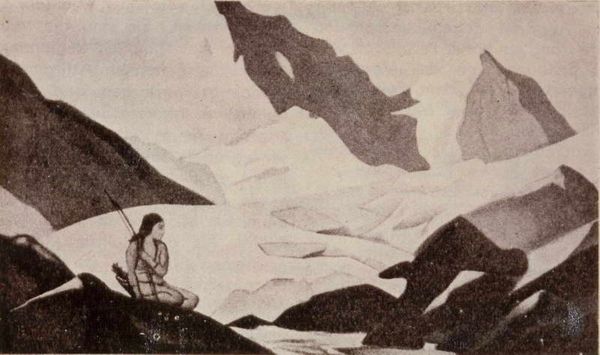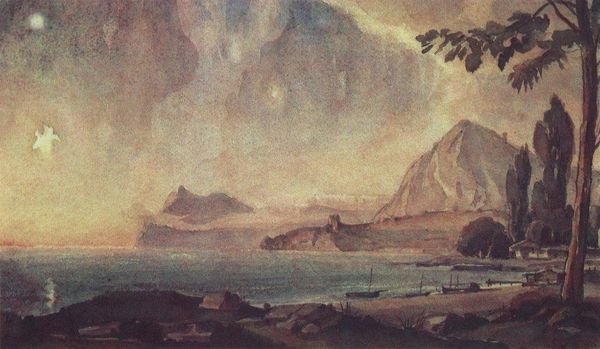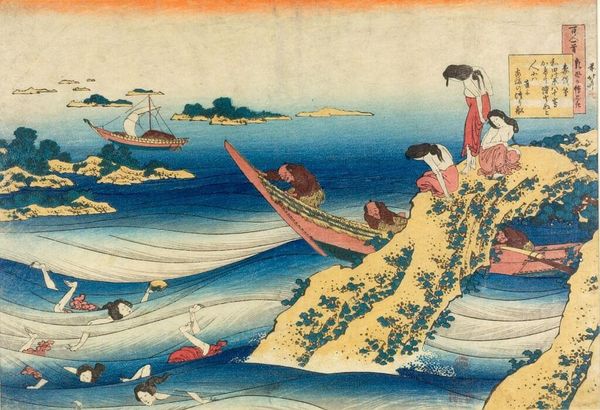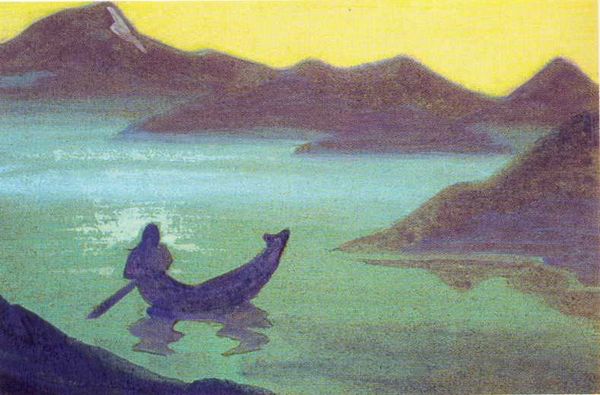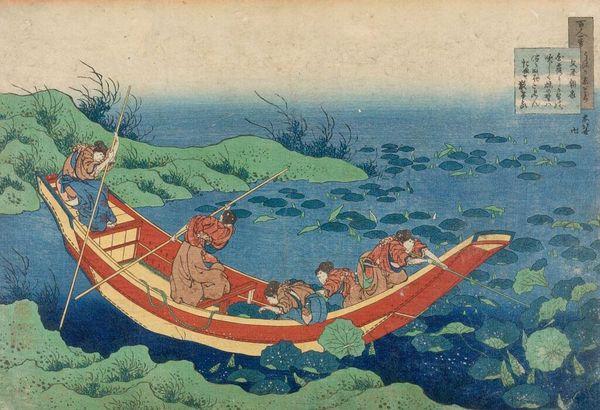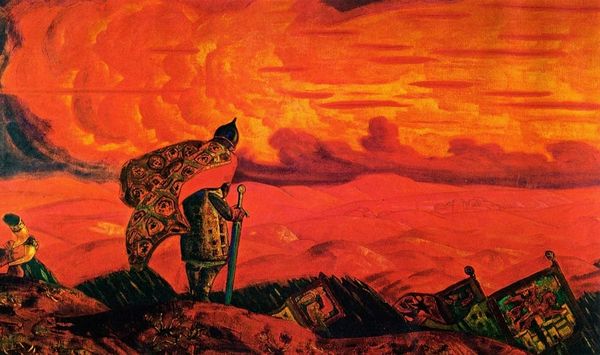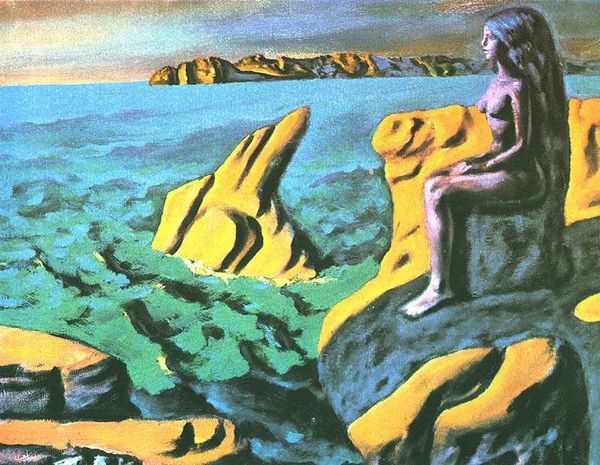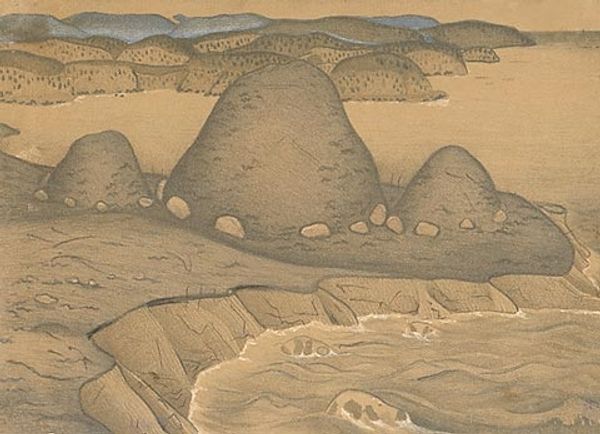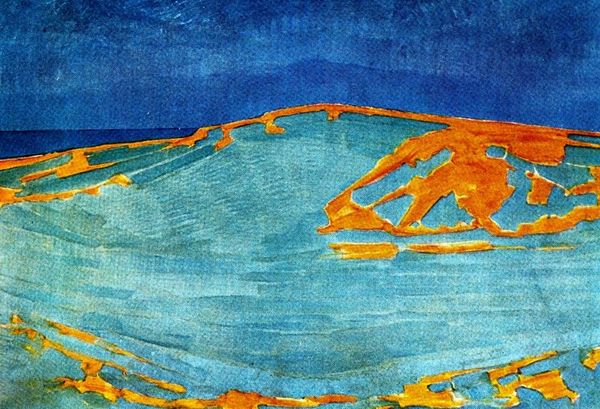
Hunter's dream 1916
0:00
0:00
nicholasroerich
Apartment Museum of Joseph Brodsky, Saint Petersburg, Russia
#
childish illustration
#
caricature
#
handmade artwork painting
#
fluid art
#
acrylic on canvas
#
naive art
#
watercolour illustration
#
mixed media digital
#
watercolor
#
watercolur painting
Copyright: Public domain
Curator: Here we have Nicholas Roerich's "Hunter's Dream," painted in 1916. What catches your eye first about this piece? Editor: It's incredibly calming. The soft blues and muted golds give it an almost dreamlike quality, and the composition, with the figures nestled in the landscape, feels very intimate and contemplative. Curator: Indeed. Roerich’s artistic style often incorporated influences from Russian Symbolism and a fascination with ancient cultures and spiritual quests. Notice how the stylized figures are integrated within the landscape; their very clothing echoes the ochre of the earth. This hints at the role of nature in our internal and societal progress. Editor: And is that a sense of lament in the painting? Considering the historical context, 1916 would have been a particularly tumultuous moment for Russia and Roerich as an artist during World War I. Could that have an impact? Curator: It certainly could. The apparent vulnerability of the sleeping figure, the hunter perhaps, does suggest a fragile state. We know Roerich explored themes of cultural preservation and pacifism. This artwork serves as a stark reminder of how dreams and cultural richness could easily be shattered. His active role in promoting peace and cultural heritage directly clashed with the violence and destruction of the era. Editor: I am thinking about the feminine presence. Is it related to Mother Earth in protecting her child? How does Roerich consider these identities, as he uses a non-Western tradition? The act of vigil here seems critical in an environment where conflict may threaten everything. What did he hope to accomplish? Curator: Through his paintings, Roerich attempted to bridge cultural divides, hoping to promote universal human values during a time of extreme social and political disruption. It speaks volumes that an artist deeply rooted in Russian traditions would visualize the dreams of a hunter—perhaps of any individual, in any country, yearning for rest in safety. Editor: Thinking of "Hunter's Dream," perhaps that rest is what allows you to think in a wider range of ideas—what shelters you as well in finding peace and harmony during a time when your own political views don’t mirror social conflicts. Curator: It’s a sobering painting, layered with cultural and historical weight, offering both comfort and a stark political comment.
Comments
No comments
Be the first to comment and join the conversation on the ultimate creative platform.
